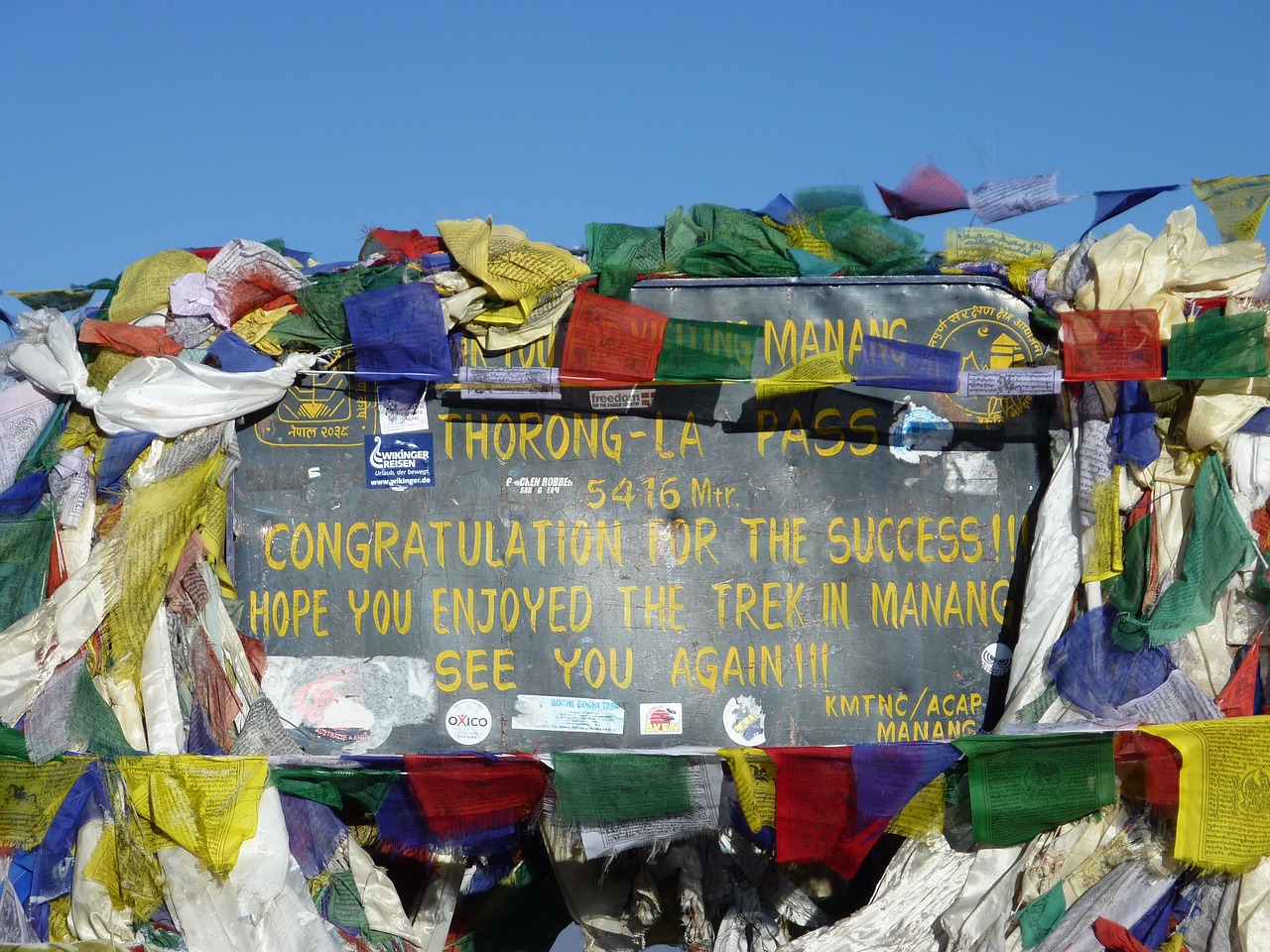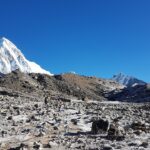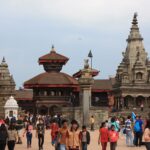Annapurna Base Camp Trekking is one of Nepal’s most renowned trekking routes, captivating adventurers worldwide. Famous for its breathtaking vistas of the Annapurna Range, including Annapurna I, the tenth-highest peak globally, this trek offers a remarkable experience. One of its key attractions is its moderate difficulty level, making it accessible to individuals of varying fitness levels.
Commencing in the charming town of Pokhara, situated approximately 200 kilometers west of Kathmandu, the Annapurna Base Camp Trek begins its journey from the village of Nayapul, which serves as the trek’s starting point. The trail then meanders through picturesque villages and lush forests before ascending to the base camp at 4,130 meters.
The trek typically spans 7 to 10 days, contingent on personal fitness levels and preferred pace. Trekkers traverse diverse landscapes encompassing verdant forests, terraced fields, and snow-capped peaks. The journey also presents opportunities to immerse oneself in local village life and gain insights into the Sherpa culture.
The Annapurna Base Camp Trek promises both challenges and rewards, providing a remarkable opportunity to forge an intimate connection with the mountains and revel in the splendor of the Himalayas. The Annapurna Base Camp Trek is ideal for those seeking an unforgettable adventure.


Click here for more detailGet Everything Cheap
Table of Contents
Consider before making a plan for the Annapurna Base Camp Trek.
Consider the following points when planning your Annapurna Base Camp Trek:
Optimal Timing
The best time to go to Annapurna Base Camp in the beautiful country of Nepal is during the spring season, from March to May. The autumn season is from Sep. to Nov.; the weather is generally clear these months. And stable, offering excellent visibility of the stunning mountain ranges. The temperatures are also moderate, making it comfortable for trekking. However, it is essential to note that the weather conditions can vary, so it is advisable to check the local forecasts and prepare for any changes. While planning for the trip, ensure you have all the proper, cloth shoes, glasses, money, medicine, and everything with you.
Permit Requirements
Various Permits are necessary for the Annapurna Base Camp trek in Nepal. These include the Annapurna Conservation Area Permit (ACAP) and the Trekkers’ Information Management System (TIMS) card. The Annapurna Conservation Area Project issues the ACAP, costing about NPR 3,000 for foreign nationals. The Nepal Tourism Board can issue the TIMS card, which costs NPR 2,000 for individual trekkers and NPR 1,000 for trekkers in a group. The cost varies occasionally; this is just for reference purposes. To apply for these permits, you can do it yourself at the offices in Kathmandu or Pokhara or through a registered trekking agency. If you are from our side, use a reliable agent to make it faster.
Hiring Guides and Porters
It is highly recommended, particularly for less experienced trekkers, to engage the services of a guide and porters to enhance safety and convenience. Hiring guides and porters during Anna Purna Basecamp is favorably advised for a successful and safe trekking experience. Guides provide valuable local knowledge and navigation assistance and can help in emergencies. Porters help carry heavy loads, allowing trekkers to focus on enjoying the journey. Their expertise and support are essential for a smooth and enjoyable trek to Anna Purna Basecamp. If you have heavy stuff to carry to the destination, you must appoint a porter or Guide.
Cost Considerations
The overall cost of the trek depends on factors such as the duration of your stay, the desired level of comfort, and the services you choose to avail. To ensure a safe and enjoyable trek, remember the following tips. There are some charges for the applications. Snacks and food will be expensive because paying the bills to deliver the eating and other stuff up to that point is costly.
Acclimatization
Ascend gradually to minimize the risk of altitude sickness. Avoid rapid altitude gain, allowing your body time to adjust.
Hydration and Nutrition
Hydration and nutrition are matters for all kinds of trek. The high altitude and physical exertion demand proper fueling and hydration to sustain energy levels and prevent altitude sickness. Drink 3-4 liters daily and consider carrying water purification tablets or a filter. Consume a balanced diet with carbs, proteins, and fats. Carbs provide energy, proteins aid muscle repair, and fats offer lasting fuel. Include rice, lentils, vegetables, nuts, and dried fruits. Eat small, frequent meals to maintain energy throughout the day. Proper hydration and nutrition ensure enjoyment, safety, and well-being in Annapurna Base Camp’s challenging conditions.
Altitude Sickness Awareness
Please educate yourself on the symptoms and risks of high altitude sickness and take necessary precautions to prevent it during the hill trip. If necessary, take some knowledge and familiarize yourself with the appropriate measures to tackle the condition, such as descending to lower altitudes.
Weather Preparedness
Be prepared for swift weather changes in the mountains. Pack suitable clothing and gear to adapt to varying climatic conditions.
Embarking on the Annapurna Base Camp Trek guarantees an extraordinary and unforgettable experience. If you seek a remarkable adventure amidst the grandeur of the Himalayas, this trek is an excellent choice.
Finally, The journey to Annapurna Base Camp is an awe-inspiring adventure that offers a unique blend of natural beauty, cultural immersion, and personal challenge. Reaching the camp at an elevation of 4,130 meters is a remarkable accomplishment, surrounded by towering mountains and panoramic views. The trek also allows one to immerse oneself in the rich local culture and encounter traditional villages. While the trail can be demanding, the sense of accomplishment and personal growth make it truly rewarding and fun. Annapurna Base Camp is the trek of a lifetime that will leave an indelible memory. You prefer Nepal Airlines which has direct flights from India, Hong Kong, China, and Malaysia to Kathmandu at Tribhuvan International Airport. Also, you can take any connection or Transit flight from anywhere.



